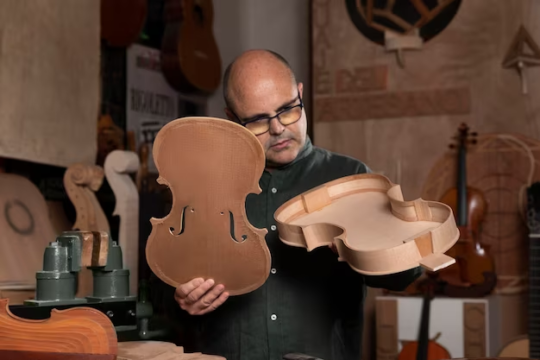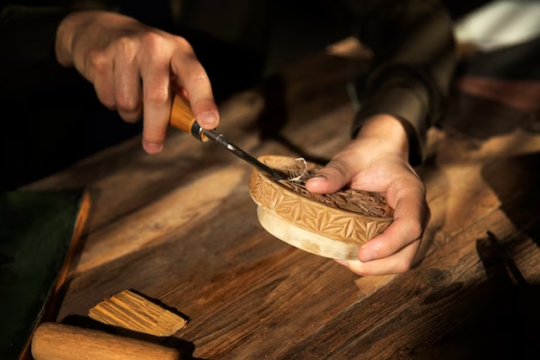A craft that has been practiced for ages, wood carving represents the union of artistic expression and skill and transcends both time and cultural boundaries. We explore the intriguing field of wooden sculpture in this investigation, revealing the creative processes that give each piece life as well as the beauty that fascinates our senses.
The Aesthetics of Wooden Sculpting:

Wooden sculptures have an appeal derived from the material’s inherent properties. Wood gives artists a blank canvas on which to express their creativity because of its organic grains, textures, and colors. The inherent charm and warmth of wood add to the classic splendor of these works of art.
- Natural Beauty: Wooden sculptures frequently draw attention to the natural beauty of the wood used. In order to add visual interest to their products, artists choose wood species with unique grains, colors, and textures with great care. Every sculpture is different from the others because of the wood’s inherent variances.
- Sensual Forms: Sculptors use wood’s inherent flexibility to create sensual shapes and beautiful lines. A vast range of expressions are possible with wooden sculpture, whether it is through the detailed details of abstract pieces or the flowing curves of figurative sculptures. Wood’s tactile texture entices touch and strengthens the bond between the viewer and the artwork.
- Cultural Significance: Wooden sculptures have been associated with cultures throughout history. Wood has been used as a medium to portray beliefs, customs, and stories in anything from religious icons to tribal masks. Each piece of wooden sculpture is a cultural artifact that tells a story because of its aesthetic qualities, which frequently have symbolic connotations.
- Aging and Patina: Wooden sculptures naturally undergo a patination process as they age. The wood takes on a rich patina that gives it a worn-out, weathered appearance. The artwork gains character from its natural aging, which also tells a story about time and the durability of wooden sculptures.
Techniques of Wooden Sculpting:

The beautiful visuals of wooden sculptures conceal complex methods that require dexterity, accuracy, and a deep knowledge of the material. Every stage of the process, from choosing the ideal wood to adding the last details, helps to create a work of art.
- Wood Selection: When creating a wooden sculpture, choose the appropriate wood is a crucial initial step. Different wood species have a range of densities, hues, and textures. Artists take into account the qualities of the wood in connection to their creative vision, making sure that it complies with the sculpture’s desired aesthetic and structural specifications.
- Design and Planning: Artists carefully consider their creations before chisels even touch wood. This includes imagining, sketching, and occasionally even building small-scale models. Sculptors can plan the implementation of their artistic concept and visualize the finished item throughout the design phase.
- Carving Techniques: The core of wooden sculpting is carving. Chisels, gouges, and knives are just a few of the tools sculptors use to shape the wood. Different methods produce different forms and textures, such as whittling, relief carving, and chip carving. Artists are able to execute their creations with precision and grace when they possess a mastery of carving techniques.
- Joinery and Construction: These skills become essential in larger wooden sculptures or those that need to maintain structural integrity. Sculptors can build and reinforce their works using techniques like mortise and tenon, dowel joints, or even contemporary adhesives.
- Final Touches: A wooden sculpture’s look is determined by its finishing touches. To smooth the surface, artists can use polishing tools, rasps, and sandpaper. Staining and varnishing are examples of surface treatments that protect and enhance the color of the wood. The sculpture’s lifespan and general beauty are enhanced by the finish selection.
Conclusion
In wooden sculpture, the artist’s skilled hands combine with the unadulterated beauty of wood to create a symphony of aesthetics and skills. Wooden sculptures are timeless and captivating due to the careful processes used and the cultural importance ingrained in each work. We find ourselves enveloped in a world where art and craftsmanship harmoniously coexist, leaving an enduring mark on the canvas of human ingenuity, as we celebrate the aesthetics and skills of wooden carving.
Relate Topic : wood carved

